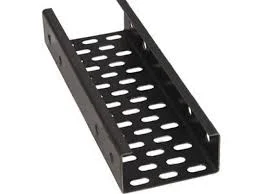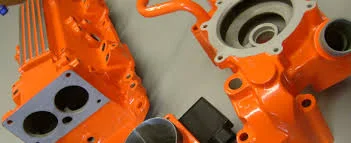Powder Coating for Precision Metal Products
Introduced in the US in the 1960’s, powder coating is a dry finishing process now popular in surface finishes for metal products. Powder coatings are used as protective and decorative finishes, and are available in a wide range of colors and textures. It’s different from conventional liquid paint because it doesn’t require a solvent. Powder coating proves tougher than liquid paint and can be used to cover a wide array of objects.
The Manufacturing Process
There are four major steps in the application process of powder coating.
1. Surface Preparation – Cleaning & Rinsing
Surface preparation before powder coat application is critical for adhesion and defect avoidance. Typically an alkaline cleaner is used to clean the surface of the workpiece, then the workpiece is rinsed for the next step. Immersion rinsing using double counter-flow immersion rinse tanks is the most common used method. In this process the relatively clean rinse water from one tank is flowed into the more contaminated rinse tank and then recycled. Therefore cleaner water is always moving to less clean rinse tanks.
Other rinse method such as spray rinse is also in use today.
2. Phosphating & Drying
After cleaning and rinsing, on the final surface is a layer of very fine phosphate crystals adhering to the surface of the workpiece. A phosphate coating has two main functions. First, the coating provides improved powder coating adhesion since the phosphate crystals act as organic coating anchoring sites. Second, the phosphate layer acts as a corrosion barrier should the organic coating get scratched.
3. Application of Powder Coating
Powder coatings are based on polymer resins, combined with pigments, leveling agents, and other additives. The resin may be a thermoplastic or a thermoset polymer. These ingredients are melt-mixed, cooled, and ground into a uniform powder. A process called electrostatic spray deposition (ESD) is then used to apply the powder coating to the workpiece.
4. Curing
After application of the powder coating, the workpiece then enters a curing oven where the coating chemically reacts to produce long molecular chains, resulting in a “skin” with high cross-link density.
Curing allows synthetic polymer chains within the formulation to bond with one another (also called cross-linking). These molecular cross-linking chains are very resistant to breakdown.
Powder Coating Oven
Benefits of Powder Coating
Although powder coating may be more energy intensive than typical paint coatings, there are a few significant advantages that makes this technology extremely popular in electronics contract manufacturing.
High Performance
Powder Coating is a high performance method of finishing products as it does not run, drip, sag, or exhibit “solvent pops.” Furthermore, powder coating offers excellent resistance to heat, abrasion, impact, UV from sunlight, and corrosion.
Powder coating can be applied in thickness’ ranging from less than 1 mil to more than 20 mils, depending upon the requirements of the application and the type of coating being sprayed.
Environmentally Sound
With metal finishings, environmental impact concerns may arise. There are no solvents used in either the cleaning phase or the spraying stage of the powder coating, thereby saving the environment from harmful toxic discharges normally associated with liquid coating. Furthermore, the powder overspray can be collected for re-use.
Work Safety
Wet paint can be flammable, carcinogenic, and hazardous to employees if handled incorrectly. In contrast, powder coatings poses little to no health, fire, or workplace dangers.
Commercial Applications
Owing to the significant benefits from powder coating treatment of metals it is therefore commonly used by many industries:
Automotive
Aerospace
Telecommunication equipment
Heavy engineering products
Medical devices
Need help finding an outsourcing manufacturing partner?
Send our experts a message so we can help.
Enjoyed this article? Don't forget to share.




